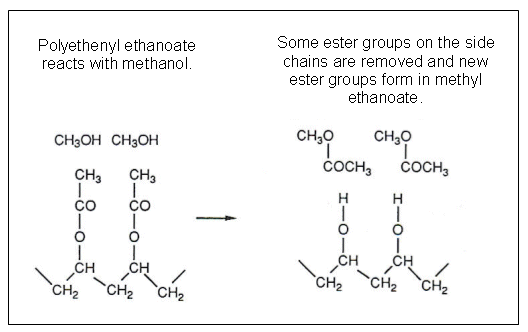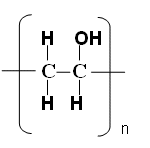
Dissolving Plastics
-
Soluble plastics can now be made; they are useful in combating the risk of infection in hospitals. Laundry bags can be made from the dissolving plastics, meaning that soiled laundry does not have to handled, as the bags can be put straight into the wash.
- Dissolving plastics are also used in surgical stitching; this means that the stitches donít have to be removed.
- Poly(ethenol) is the dissolving plastic used to make the laundry bags.
- It is a new synthetic polymer that is made from another plastic (polyethenyl ethanoate) by the process of ester exchange.
- Polyethenol is made by ester exchange rather than by polymerisation, as ethenol is an unstable compound.

- Ethenol is an unstable form of the aldehyde ethanal.
- Ester exchange process:

- The structure of polyethanol is shown to the right.

- It is the OH group that makes the polymer soluble in water (the OH can interact with the OH in water).
- The extent of the ester exchange can be controlled by warming.
- The plasticís solubility depends on the percentage of ester groups which have been removed.
- Different solubilities give the plastics different uses.

Useful books for revision:
Revise AS Chemistry for Salters (Written by experienced examiners and teachers of Salter's chemistry)
Revise AS Chemistry for Salters (OCR) (Salters Advanced Chemistry)
Home








